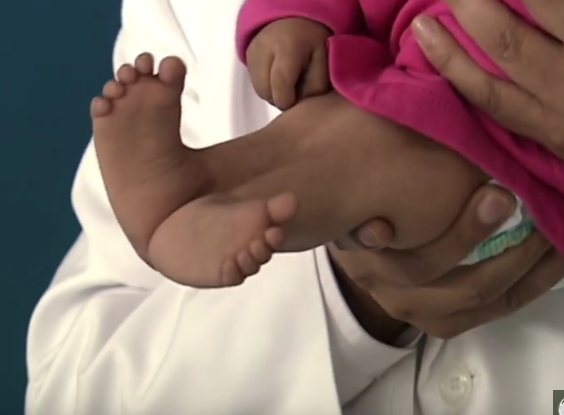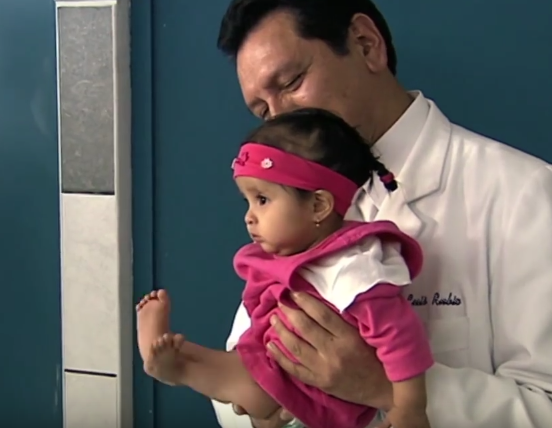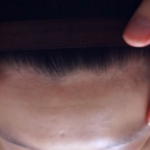Mermaid syndrome is a very rare congenital development disorder that is characterized by anomalies affecting the lower spine and limbs. This disorder may also be referred in other names as sirenomelus or midline disorder
Usually, affected infants have partial or complete fusion of the lower limbs. There may be other additional malfunctions, which may be seen in infants with this disorder including genitourinary abnormalities, lumbarsacral spine and pelvis anomalies, underdevelopment or absence of both or one kidney or gastrointestinal abnormalities.
Causes of Mermaid Syndrome
It’s not known what causes mermaid syndrome, however, researchers think that there may be both environmental and genetic issues contributing to this kind of congenital disorder. In most of the cases, they tend to occur in a random way without any apparent reason. This could suggest that environmental factors or some new mutation may be responsible in causing the disorder. It’s also believed that mermaid syndrome is multifactorial indicating that different factors may come into play in causing it. Genetic factors may also be a contributing factor.
Again, environmental factors, which could play role in causing the disorder are yet not known. Some people may be more likely than others to develop this disorder. There are individuals who are said to be genetically predisposed to developing mermaid syndrome. For example, you may have a person with a genetic predisposition to having the disorder meaning they carry genes for the condition, however, they may not express it unless there is a triggering factor or the gene is activated by some environmental factors.
It is also believed that both genetic and environmental factors could have teratogenic effect on development of fetus. By teratogenic, it means there may be substances likely to interfere with the development of fetus.
Researchers also hold the view that mermaid syndrome may arise due to irregularities that occur in early development of vascular system or blood circulating system in the fetus.
Mermaid Syndrome – symptoms
There are features that have been noticed in people who have sirenomelia. People with this disorder will have symptoms such as absence of the sacrum, spina bifida, anal atresia, abnormality with the cardiovascular system, and renal hypoplasia. An infant may have fused legs or he or she may have absence of the foot structure; this is the most typical sign.
The person may have abnormal kidney and absence of genitalia. He or she may also have underdeveloped or incomplete reproductive system. There may also be spine or vertebral abnormalities.
Diagnosis
Doctors diagnose the disorder before birth, usually around the second trimester. The diagnosis is made through sonogram or fetal ultrasound. Also, the physical exam of a baby after birth is enough to diagnose the disorder because of the inherent unique features and signs associated with it. It is important to understand that there may be other clinical conditions, which could present in a similar manner or with such symptoms and signs as seen in patients with mermaid syndrome. Therefore, a parent or patient who has a baby with the condition may require tests to be done on the infant so that a definitive diagnosis is attained.
Risk Factors Associated with Mermaid Syndrome
Some people may have an increased risk of having the disorder than others. For instance, a developing male fetus is more likely to have this condition than a female fetus. A person may also develop the condition if he or she is of one twin within identical twins at time of gestation. In this case, an identical twin may have an increased risk of having the disorder compared to a fetus of a single pregnancy or fraternal twin.
An early development impairment may also cause a fetus to have only a single umbilical vein and artery instead of two each. In time of gestation, when a fetus has one umbilical artery rather than having two, she is considered to be at increased risk of having the congenital disorder.
Nonetheless, it is essential to understand that having a risk factor may not necessarily indicate that you will get the disorder. On the flip side, not having a risk factor may not mean a baby won’t get the disorder.
Complications
While severity of mermaid syndrome or sirenomelia may vary among babies, you will realize that many of the babies that have this disorder tend to die during birth. The ones that survive have complications such as renal abnormalities including kidney failure or not having one or both kidneys. The babies also have heart conditions, brain or spine anomalies, or small, immature or abnormal lung structures. The patients may have inability to move or walk without help. They may also experience urethral agenesis meaning congenital absence of urethra.
Treatment of Mermaid Syndrome
Because of the nature of the disorder, treatment may be difficult and at times, pregnancy may be terminated when it is believed that the condition will bring about adverse after-birth complications. A doctor will provide advice on potential risk of having the pregnancy and giving birth. Other treatment options may come after birth and they include:
- Separating the lower limbs in case the baby is healthy enough to have a surgical procedure
- Amputation of the lower limbs may be done
- An external waste pouch can be created to help the baby in case the organs that help in processing waste are absent
- If kidneys are absent or fail, a kidney transplant may be an option for the baby
- Reconstructive surgery may be needed to enable the body to function.



